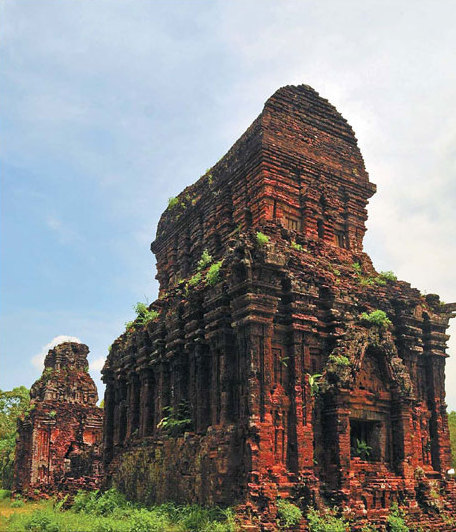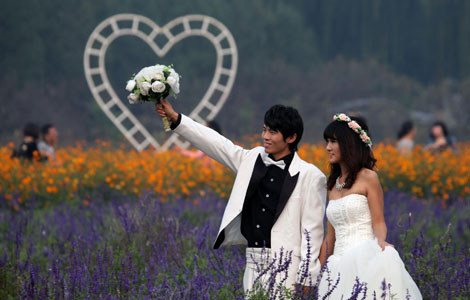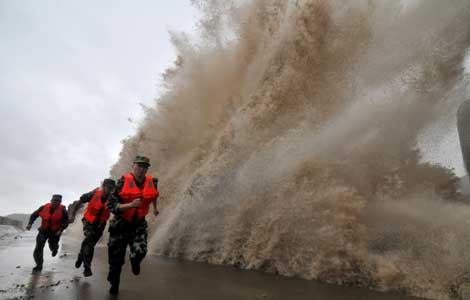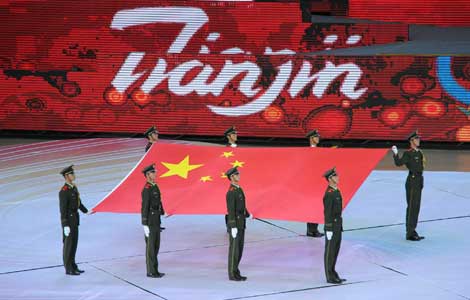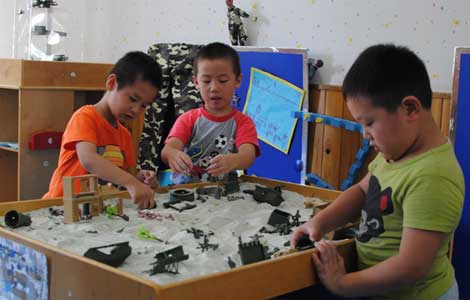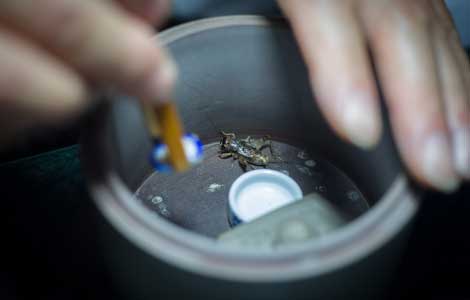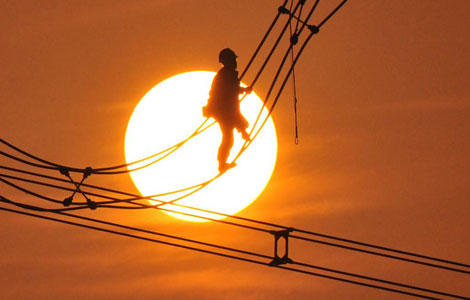My Son's secrets
Updated: 2013-10-07 07:27
By Nguyen Thi Thuy Anh and Zhang Jianhua (China Daily)
|
||||||||
The religious center of the capital of the ancient Champa Kingdom in Vietnam holds many mysteries for modern visitors. Nguyen Thi Thuy Anh and Zhang Jianhua report.
Local and foreign visitors to the My Son Sanctuary, located some 650 km south of Hanoi, still marvel at the remarkable architectural ensemble that developed over a thousand years from the fourth to the 13th century.
The sanctuary, which has been declared a World Heritage site by the United Nations, presents a vivid picture of spiritual and political life in an important phase of Vietnam's history.
Its signature features include a series of impressive temple towers located in a valley surrounded by mountains. The area was the religious center for the capital of the Champa Kingdom.
|
My Son Sanctuary in central Vietnam features remains of tower-temples and carved stone works. Built between the 4th and 13th centuries, the region was the religious and political capital of the Champa Kingdom. Photos by Zhang Jianhua / Xinhua |
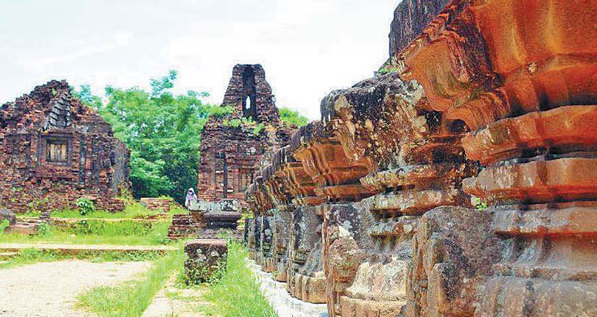
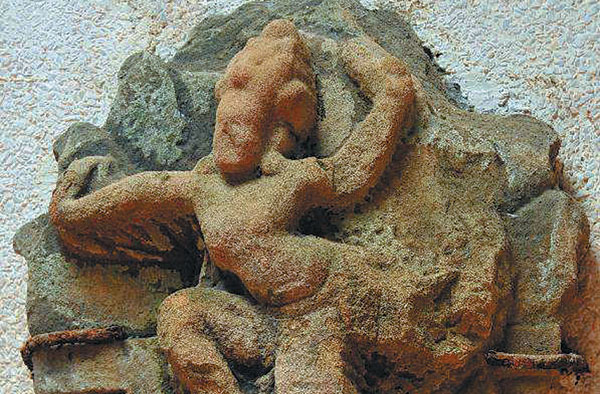
"There are a lot of secrets about the Champa Temples in the My Son Sanctuary that still remain a mystery for most people, including the Vietnamese themselves," tour guide Vo Van Nhut told visitors.
Nhut said that a lot of people have visited the sanctuary, but they do not understand how the Champa people built the temples and how they made bricks.
"The bricks here are more than a thousand years old, but they remain sturdy. Nobody knows about the technology used by the Champa people and even archaeologists cannot explain how this was possible," he said.
Nhut said that one of the biggest mysteries in My Son is how the bricks were stuck together, although some Vietnamese archaeologists have theorized that the builders used organic resin glue.
"No one knows for sure what kind of materials the builders used," he added.
The temples in My Son Sanctuary are constructed with kiln-fired brick and have stone pillars decorated with sandstone bas-reliefs depicting scenes from Hindu mythology. The technological sophistication as shown by the temples and stone pillars are a testament to Champa engineering skills, while the elaborate iconography and symbolism of the towers give insight into the content and evolution of Champa religious and political thought.
"When visiting My Son, it is easy to tell the difference between the original walls and the restored walls. It is believed that when finishing the construction of the temples, the Champa people used a special mortar to cover the outer layer in order to harden it," Nhut said.
The old walls have a bright color, while the restored walls are darker, Nhut said.
After centuries of disuse, My Son was rediscovered by French scholars in 1898, and restoration work began in 1937.
In 1979, the My Son Sanctuary was recognized as a National Site by the Vietnamese Culture Ministry and was later ratified by the United Nations Educational, Scientific and Cultural Organization as a World Cultural Heritage site in 1999 based on two prominent criteria - it is a typical example of cultural exchange and a unique artifact of an extinct Asian civilization.
The 71 temples in My Son were built into groups that basically followed the same model. Each group comprised a main tower, or kalan, surrounded by smaller towers and auxiliary monuments. The kalan symbolizes the sacred mountain of Meru at the center of the universe where the Gods live, and it is dedicated to Shiva.
The small temples are devoted to the spirits of the eight compass points. The towers are stocked with offerings and sacred objects from pilgrims. The main temples do not have windows, so it is very dark inside. Windows are only found in the towers.
Another mystery in My Son is how the decorative carvings were installed. Were the walls constructed and then carved, or were the bricks carved first and then assembled to create the walls?
An examination of the carvings reveals no broken lines as expected if the bricks were carved first and then assembled. Scientists believe that the craftsmen made the carvings directly onto finished brick walls. This technique is unique in Asia.
In addition to the construction methods, the ancient language is another mystery of My Son.
"It is difficult to translate the writings here. They are derived from the Sanskrit language. The language found in My Son Sanctuary was used by the upper class and for religion and not representative of what ordinary people spoke. It dates back 800 years and was carved by a very good technology so it can still be seen very clearly at present," Nhut said.
Xinhua
(China Daily USA 10/07/2013 page10)
Most Viewed
Editor's Picks

|
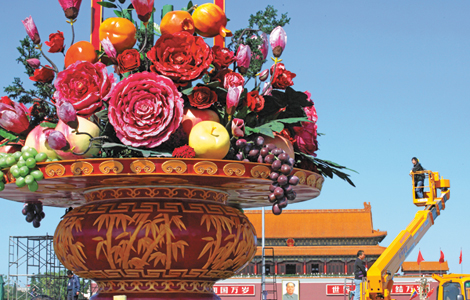
|

|

|

|
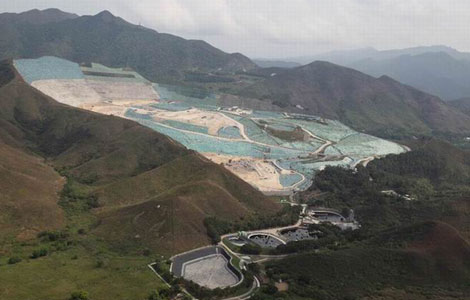
|
Today's Top News
Academics evaluate China at conference
Experts examine core values of China, US
China needs to export ‘public goods’: expert
Sowing the seeds of new business
Chinese investors visit Silicon Valley
Two Chinese die in plane crash near Saipan
Destroying Syria's gas arms started
Direction charted to resolve disputes
US Weekly

|

|
